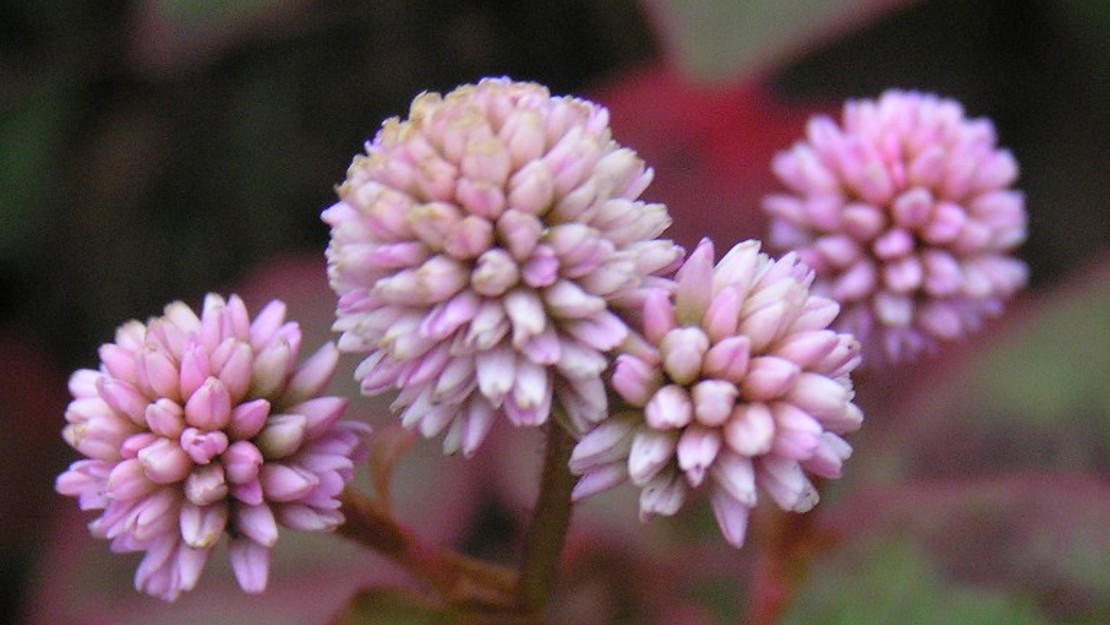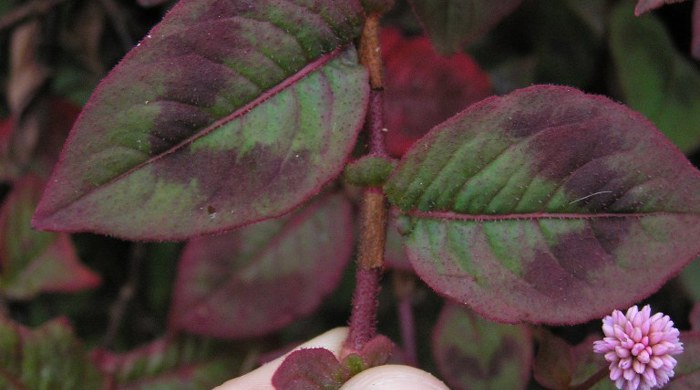Persicaria capitata
Pink-head knotweed
Family: Polygonaceae
Origin: Asia

Regional Pest Management Plan (RPMP) status
- Not a legally declared pest
General description
Trailing evergreen perennial herb that has a urine-like odour. Stems are long and slender. Leaves are < 6 cm long, ovate and alternate, with a reddish, hairy midrib and 'V' pattern. Flowers are pink and borne in ball-like inflorescences in October – March.
What you need to know
Although pink-head knotweed is not a legally declared pest plant, it may still be invasive in some situations. Consider lower risk alternatives for your garden, such as native plants.
Habitats
Open areas, dry banks, rocky areas.
Dispersal
Sets seed. Vegetative spread from trailing stems. Human-mediated dispersal through dumping of garden waste.
Impact on environment
Forms dense mats, displacing native vegetation.
Control
Site Management
Follow up treated areas 3 times per year. Encourage natural regeneration of native plants or replant treated areas where possible after 2-3 treatments to establish dense ground cover and minimise reinvasion.
Recommended approaches
Physical control
Method: Dig out.
Plant parts requiring disposal: All parts.
Disposal options: Remove to greenwaste or landfill.
Biocontrol
Biocontrol is currently not available for this species.
Community agrichemical control recommendations
No qualifications: Foliar spray with 10ml glyphosate green per 1L of water.
Basic Growsafe certified: Foliar spray in summer with 100ml glyphosate green per 10L of water.
Certified Handler/Experienced agrichemical user: Foliar spray with 200ml glyphosate green and 3g metsulfuron-methyl per 10L and 20ml penetrant.
Caution: When using any herbicide or pesticide please read the label thoroughly to ensure that all instructions and safety requirements are followed.





